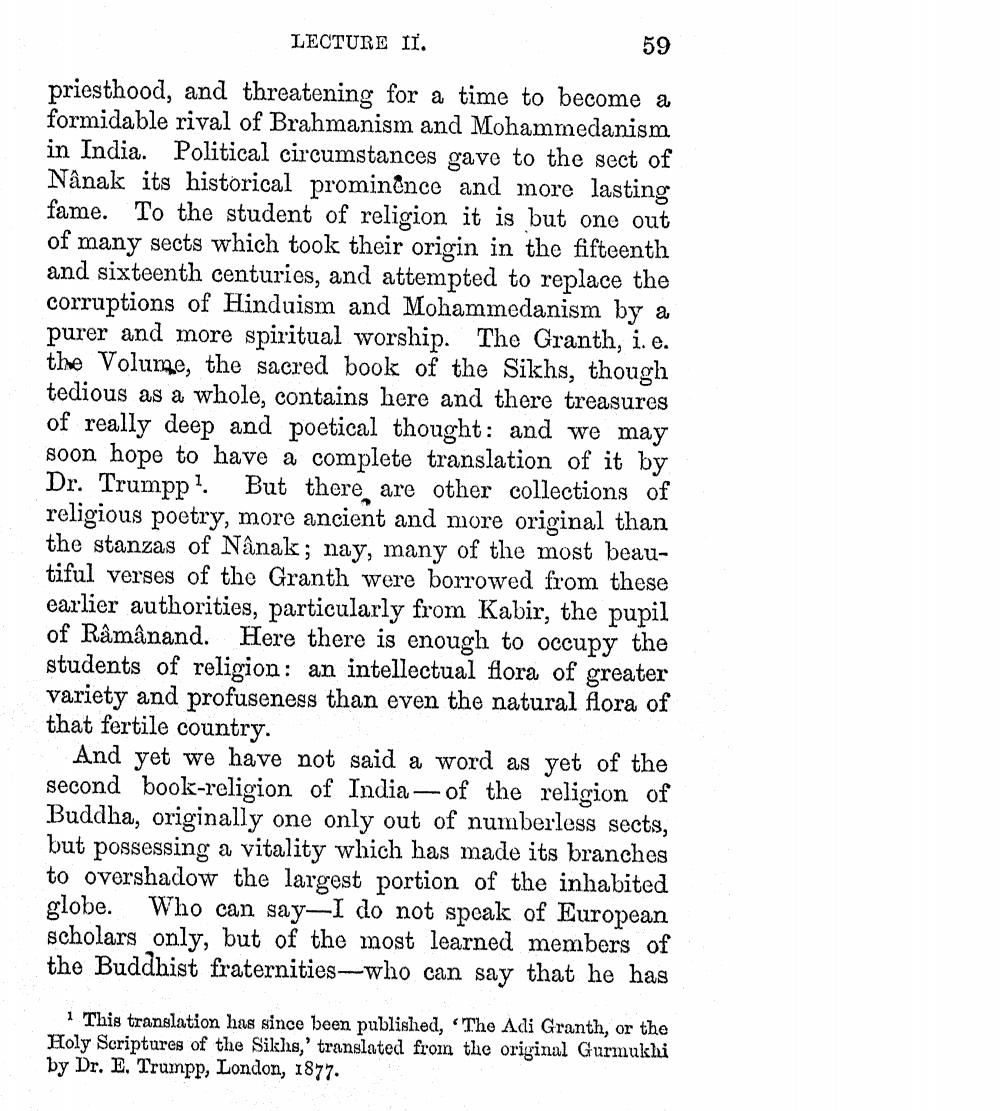________________
LECTURE II.
59
priesthood, and threatening for a time to become a formidable rival of Brahmanism and Mohammedanism in India. Political circumstances gave to the sect of Nânak its historical prominence and more lasting fame. To the student of religion it is but one out of many sects which took their origin in the fifteenth and sixteenth centuries, and attempted to replace the corruptions of Hinduism and Mohammedanism by a purer and more spiritual worship. The Granth, i. e. the Volume, the sacred book of the Sikhs, though tedious as a whole, contains here and there treasures of really deep and poetical thought: and we may soon hope to have a complete translation of it by Dr. Trumpp1. But there are other collections of religious poetry, more ancient and more original than the stanzas of Nânak; nay, many of the most beautiful verses of the Granth were borrowed from these earlier authorities, particularly from Kabir, the pupil of Râmânand. Here there is enough to occupy the students of religion: an intellectual flora of greater variety and profuseness than even the natural flora of that fertile country.
And yet we have not said a word as yet of the second book-religion of India-of the religion of Buddha, originally one only out of numberless sects, but possessing a vitality which has made its branches to overshadow the largest portion of the inhabited globe. Who can say I do not speak of European scholars only, but of the most learned members of the Buddhist fraternities-who can say that he has
1 This translation has since been published, "The Adi Granth, or the Holy Scriptures of the Sikhs,' translated from the original Gurmukhi by Dr. E. Trumpp, London, 1877.




